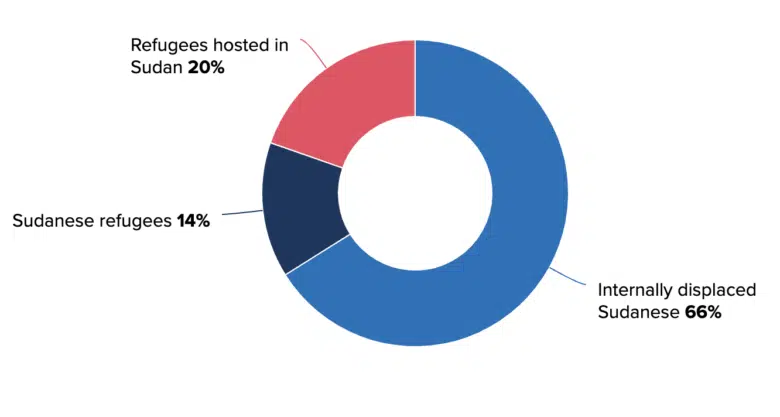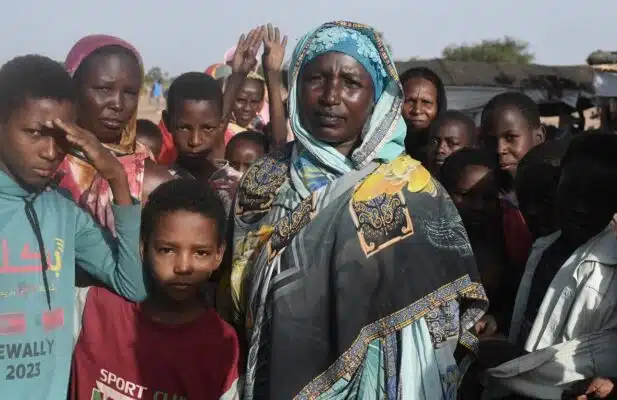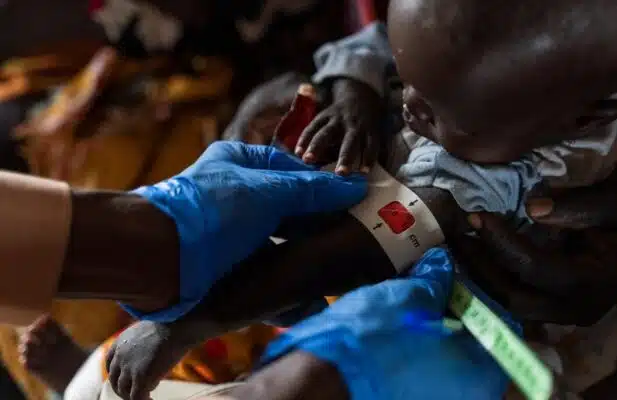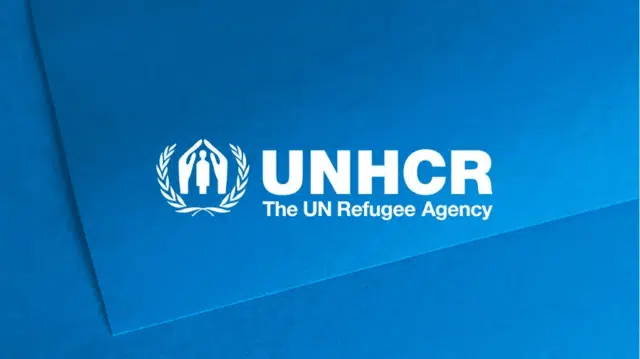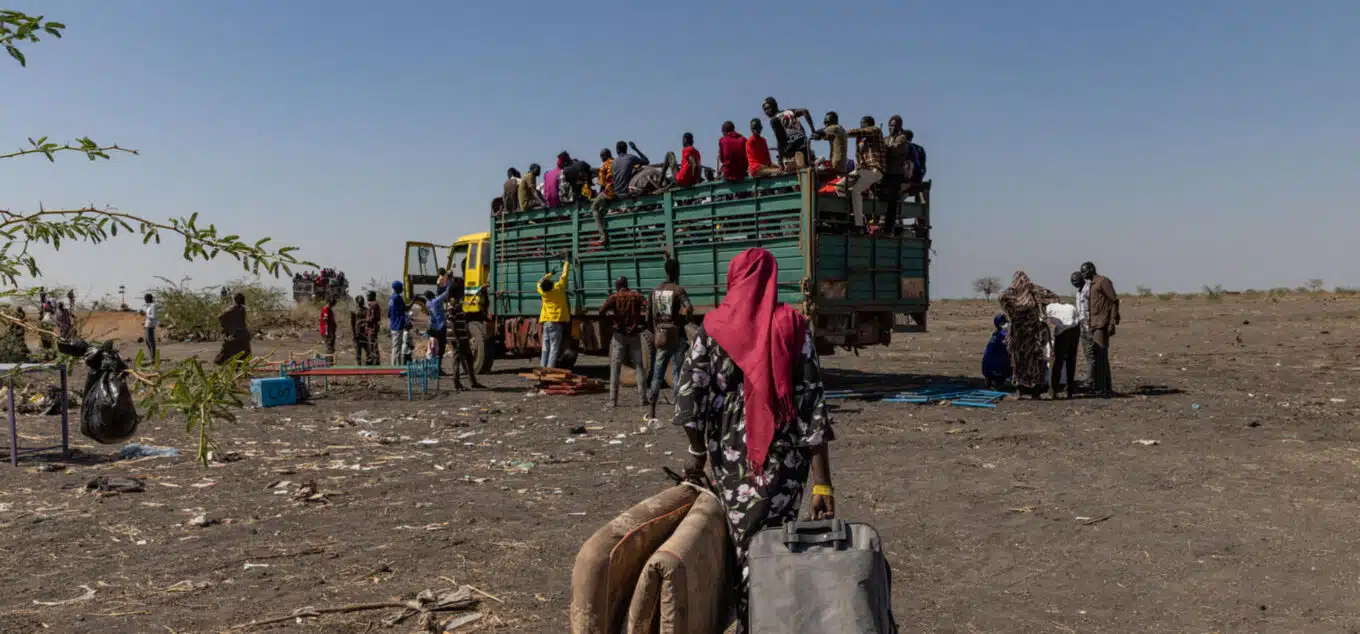
South Sudanese returnees and Sudanese refugees who fled the conflict board trucks at the Joda border point near Renk, South Sudan. © UNHCR/Andrew McConnell
The fighting inside Sudan is having devastating humanitarian effects both inside the country and in the wider region
Despite repeated announcements of ceasefires, the intense fighting between two military factions that erupted in Sudan’s capital, Khartoum, on 15 April and quickly spread to other parts of the country continues.
For civilians caught in the crossfire, the consequences have been catastrophic. Over 5 million people have had to flee their homes to escape brutal violence, most health facilities are no longer functioning and hunger and disease are on the rise.
The fighting has created a humanitarian emergency both inside Sudan and in the wider region, both of which were already struggling to cope with mass displacement, economic turmoil and climate shocks before the latest crisis erupted.
Here is a look at the humanitarian context behind the current crisis, its impact on civilians and what UNHCR, the UN Refugee Agency, and its partners are doing to respond.
1. The crisis is compounding already record levels of humanitarian need in Sudan
The fighting between the Sudanese Armed Forces and the paramilitary Rapid Reaction Forces comes at a time when Sudan was already experiencing its highest levels of humanitarian need in a decade.
The removal of long-time authoritarian leader Omar al-Bashir in 2019 brought optimism that the country would be returned to civilian rule. However, a military coup two years later dissolved the transitional civilian government sparking political and economic turmoil and reigniting intercommunal conflict in the western Darfur region and Blue Nile and Kordofan states.
In addition, extreme weather linked to climate change, including floods and droughts, has affected hundreds of thousands of people across the country, destroying crops and livestock and making it increasingly difficult for families to put food on the table.
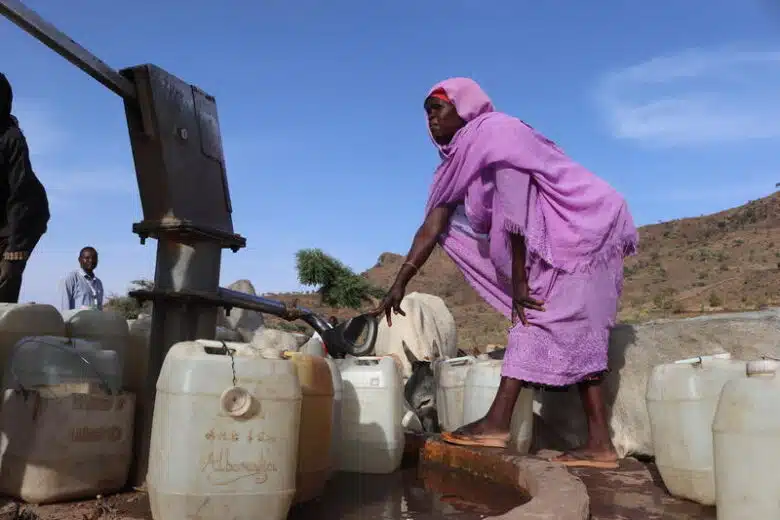
A Sudanese woman collects water in a village for internally displaced people in Central Darfur. © UNHCR/Modesta Ndubi
2. Before the current conflict, 4.5 million Sudanese people were already displaced
Sudan has been grappling with conflict and displacement since the start of the Darfur crisis in 2003. By the end of 2022, over 3.7 million people were internally displaced, with the majority living in camps in Darfur. Another 800,000 Sudanese were living as refugees in neighbouring countries such as Chad, South Sudan, Egypt and Ethiopia.
At the same time, the country was home to over 1 million refugees – the second-highest refugee population in Africa. The majority were from South Sudan and lived in Khartoum and White Nile States but refugees fleeing the crisis in northern Ethiopia starting in late 2020 also found refuge in eastern Sudan and others came from Eritrea, Syria and the Central African Republic.
Some of those now fleeing the country are refugees attempting to return home or to other neighbouring countries, even if that means going to areas that are far from stable or ready to receive them.
Chart: Displacement prior to April 2023
3. UNHCR estimates that over 1.8 million people will flee Sudan to neighbouring countries
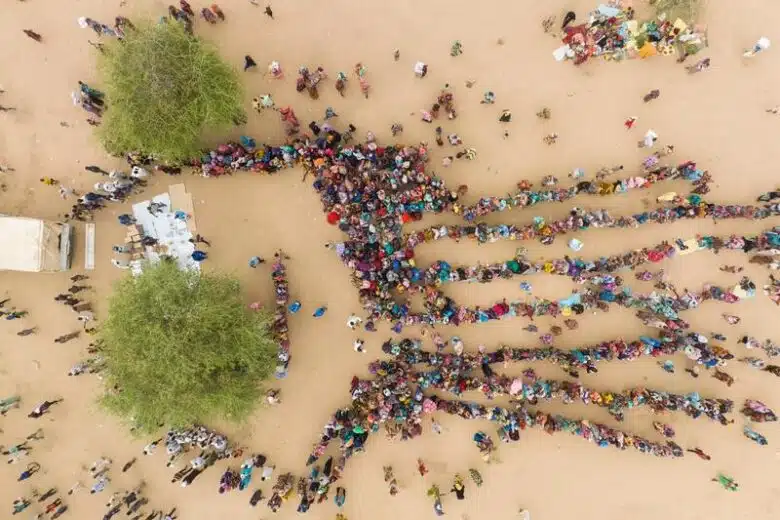
An aerial view of relief items being distributed to newly arrived Sudanese refugees at the Madjigilta site in Chad. © UNHCR/Colin Delfosse
In the first five months of the crisis, over 1 million refugees and returnees fled the country while another 4.3 million people were displaced inside Sudan. The country now has the largest number of internally displaced people globally.
Chad has received the largest number of people, followed by Egypt, Ethiopia, South Sudan and the Central African Republic. South Sudan has mainly received returning nationals who had been living in Sudan as refugees.
Without a resolution to the crisis, many hundreds of thousands more people will be forced to flee in search of safety and basic assistance. UNHCR and its partners estimate that the number of refugees and returnees could reach 1.8 million by the end of 2023.
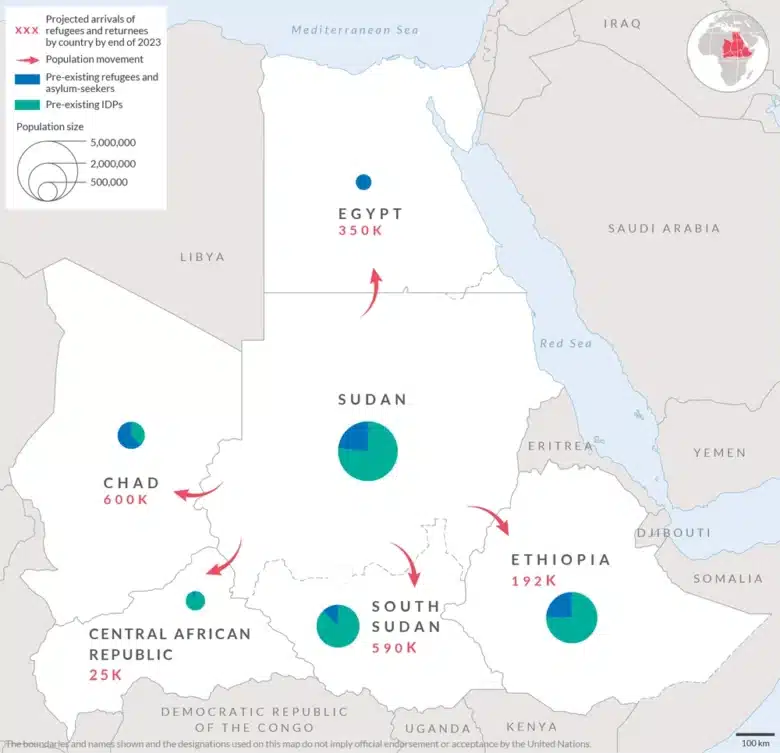
© UNHCR
4. The chaos in Sudan is piling further needs on already stretched host countries
All the neighbouring countries impacted by this new emergency were already hosting large numbers of refugees and internally displaced people on insufficient and dwindling levels of humanitarian funding. At the same time, countries like Chad and South Sudan (the two least developed countries in the world) were battling hunger, insecurity, and the impacts of climate change.
Now the conflict is disrupting trade and supply chains, pushing up the costs of food and fuel.
Those crossing borders, most of them women and children, are arriving to remote areas with nothing and in dire need of medical care. They urgently need food, water, shelter, healthcare and basic items like blankets, cooking utensils and soap. Psychosocial support for parents and children who have witnessed or experienced appalling violence is another priority, as is responding to disease outbreaks and high rates of malnutrition.
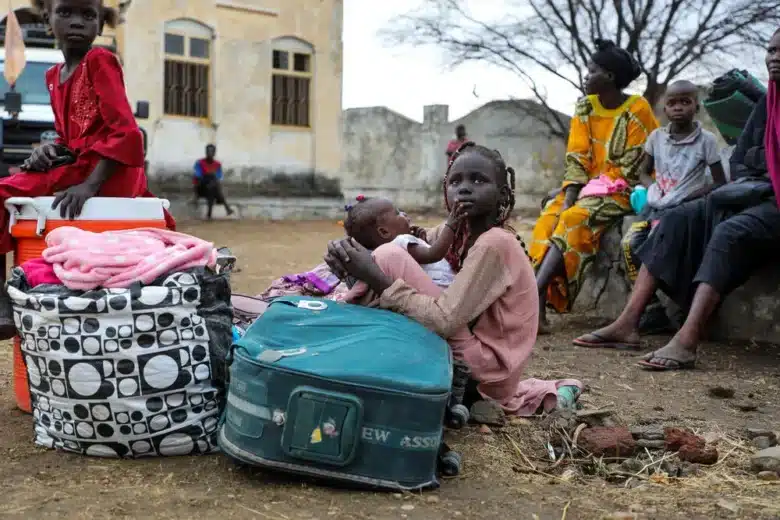
A family of returning South Sudanese refugees wait at a UNHCR transit centre at the Joda border point, Renk, South Sudan. © UNHCR/Charlotte Hallqvist
With the rainy season now in full swing, delivering aid before roads to remote border regions and moving newly arrived refugees to safer areas has become extremely challenging.
Several years of devastating floods in South Sudan had already damaged roads making it almost impossible for returning refugees to travel overland from the border to home areas. Those that do make it home are likely to find fragile communities still recovering from years of conflict or submerged by flood waters.
5. More help is urgently needed
UNHCR has emergency teams in neighbouring countries and is working with national authorities and partners to register new arrivals, ensure their most immediate needs are met and relocate them away from border areas. But displacement and needs continue to soar.
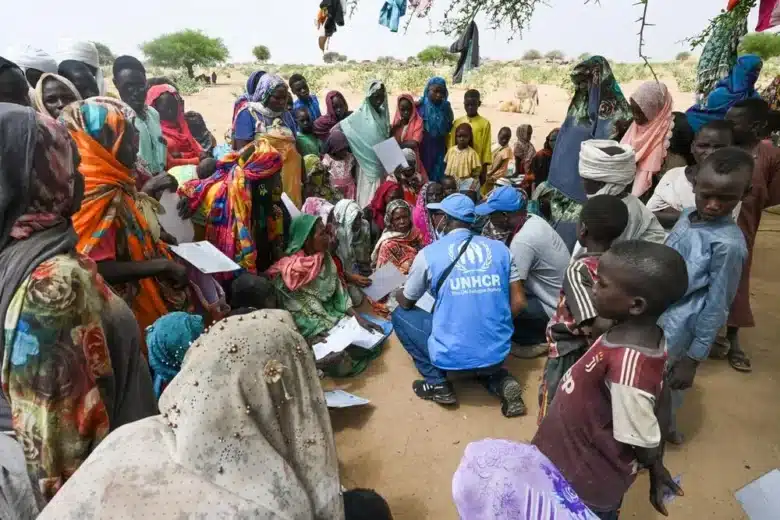
UNHCR staff pre-register newly arrived Sudanese refugees at the Koufroun site in the Ouaddaï region of Chad. © UNHCR/Colin Delfosse
An initial estimate by UNHCR and its partners that they would need $445 million to respond to the needs of people fleeing Sudan has increased two-fold to $1 billion to provide aid and protection until the end of the year. While the needs have grown exponentially, donor funding has not kept pace.
Inside Sudan, the clashes in Khartoum and Darfur have restricted the ability of UNHCR and other aid agencies to deliver assistance. In addition, supplies of aid have been looted. In areas where the security situation is calmer, UNHCR has been able to visit refugee settlements and is working with Sudan’s Commission for Refugees to continue providing protection and assistance. Water and basic health assistance is still available, and the World Food Programme has been able to distribute food assistance in refugee camps in the east and in White Nile State.
UNHCR is urgently calling on the international community for new funding to respond to the crisis.
“The needs are vast, and the challenges are numerous,” says Raouf Mazou, UNHCR’s Assistant High Commissioner for Operations. “If the crisis continues, peace and stability across the region could be at stake.
Sudan emergency: hundreds of thousands of people require urgent help
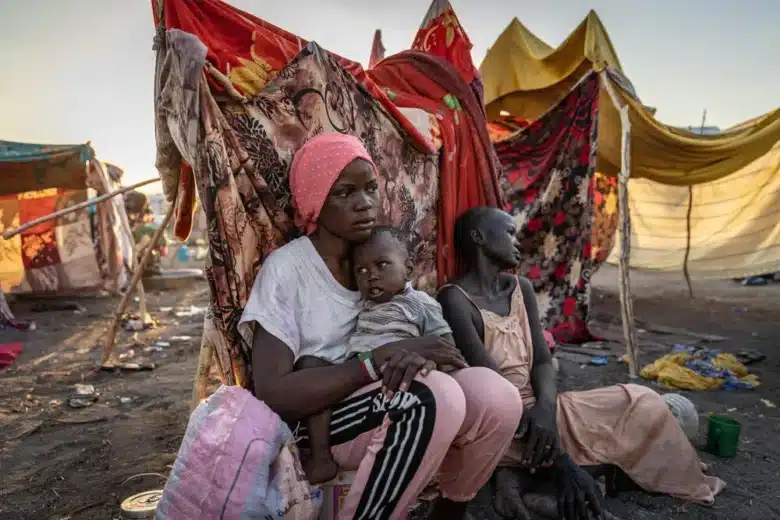
Returning South Sudanese refugee Nyauke Chianjiak, 18, sits with her one year old sister, Kuoli, and mother Naya, at a transit point near Renk, South Sudan. © UNHCR/Andrew McConnell
This story has been updated. The original version was published on 12 May 2023 with the update published by UNHCR on 22 September 2023.



